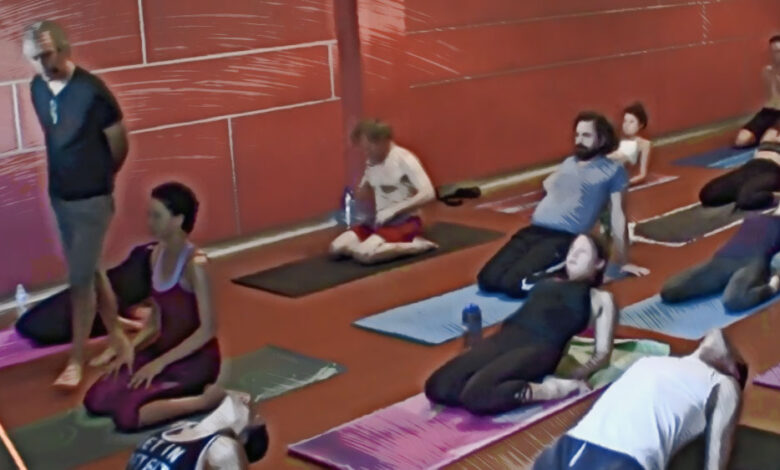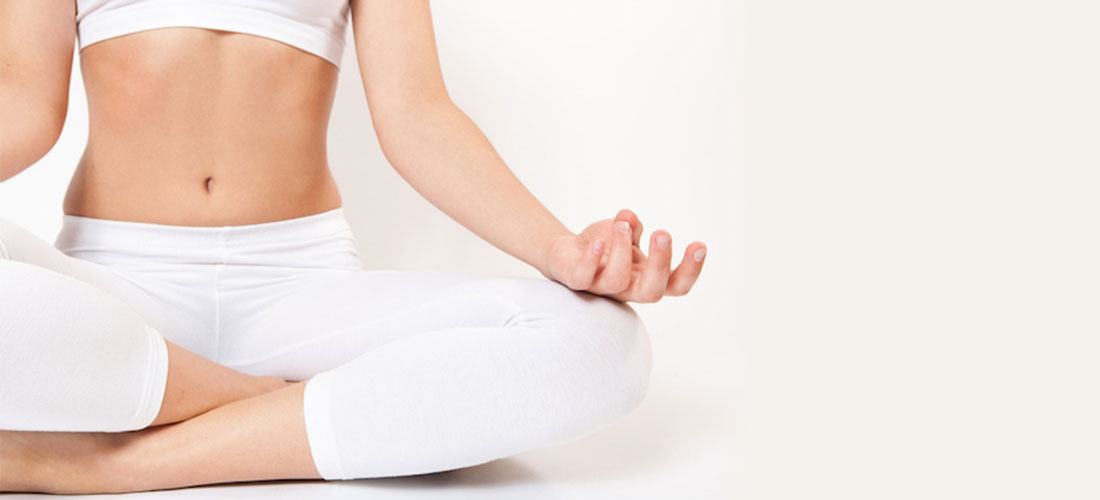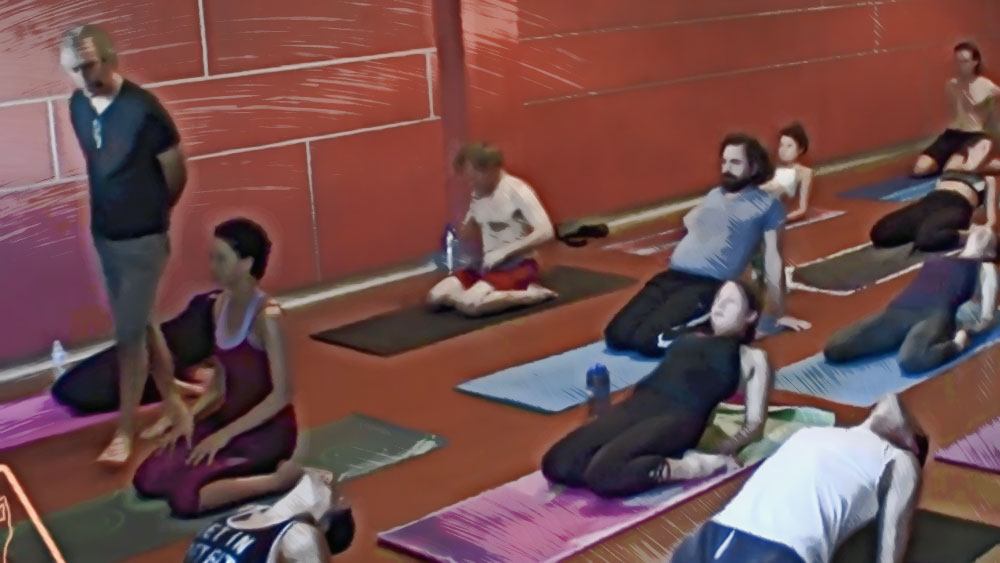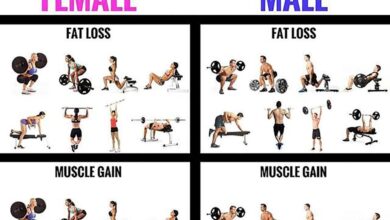
Yoga for high blood pressure offers a holistic path to managing this common health concern. It combines ancient techniques with modern science to explore how gentle movement, controlled breathing, and mindful practices can significantly impact blood pressure levels. This exploration delves into the potential benefits of yoga, outlining specific poses, breathing exercises, and lifestyle considerations to effectively manage high blood pressure.
High blood pressure, a silent threat to cardiovascular health, can be effectively managed through a combination of lifestyle changes and medical interventions. Yoga, with its focus on physical postures, breathing techniques, and mindfulness, presents a compelling alternative and complementary approach to conventional treatments. This guide explores the potential of yoga for high blood pressure, examining its underlying mechanisms, practical applications, and the importance of consulting healthcare professionals.
Introduction to Yoga for High Blood Pressure
High blood pressure, or hypertension, is a common condition where the force of blood against artery walls is consistently elevated. Over time, this increased pressure can damage blood vessels, leading to serious health complications like heart disease, stroke, and kidney problems. Early detection and effective management are crucial to prevent these potentially life-altering consequences.Yoga, a holistic practice originating in ancient India, encompasses physical postures (asanas), breathing techniques (pranayama), and meditation.
It’s designed to promote physical and mental well-being by fostering balance, flexibility, and mindfulness. The potential benefits of yoga extend beyond physical improvements, impacting mental clarity, stress reduction, and overall emotional equilibrium. It’s a promising approach to holistic health management, especially for conditions like high blood pressure, which often have underlying stress and lifestyle components.
Potential Mechanisms of Yoga in Managing High Blood Pressure
Yoga’s impact on blood pressure is multifaceted, encompassing various physiological and psychological pathways. Regular practice can lead to improvements in cardiovascular function. Specific breathing techniques, such as alternate nostril breathing (nadi shodhana), can help regulate the autonomic nervous system, calming the “fight or flight” response and potentially reducing blood pressure. Additionally, yoga asanas (postures) can improve circulation and flexibility, promoting healthy blood flow.
Stress reduction is another key factor. Yoga’s emphasis on mindfulness and relaxation can lower stress hormones like cortisol, which is often linked to elevated blood pressure. Overall, the cumulative effect of these practices can contribute to sustained blood pressure control.
Comparison of Yoga and Conventional Treatments for High Blood Pressure
| Aspect | Yoga | Conventional Treatments |
|---|---|---|
| Potential Benefits | Improved cardiovascular function, stress reduction, enhanced flexibility, improved sleep quality, reduced anxiety and depression. | Medication control of blood pressure, dietary changes, regular exercise. |
| Drawbacks | Potential for injuries if not practiced correctly, may not be sufficient for severe cases, requires consistent practice for noticeable results. | Potential side effects from medication, dietary restrictions can be challenging, may not address underlying stress factors, regular exercise requires discipline. |
| Considerations | Yoga should be incorporated as a complementary approach to conventional treatment, not a replacement. It is essential to consult with a physician before starting any new practice. The results can vary greatly depending on individual factors and commitment to the practice. | Medication dosages may need adjustments based on individual response. Dietary changes need to be personalized and sustained. Regular exercise should be integrated into daily routine. |
This table highlights a broad comparison. Individual responses to both yoga and conventional treatments can differ significantly. It is crucial to consult with healthcare professionals to determine the most suitable approach for managing high blood pressure.
Yoga Practices for High Blood Pressure Management
Various yoga practices can contribute to blood pressure management. Breathing exercises like deep breathing and alternate nostril breathing (nadi shodhana) can calm the nervous system, reducing stress hormones and lowering blood pressure. Gentle asanas (postures), such as seated forward bends and child’s pose, promote relaxation and improve circulation. Holding specific postures, like downward-facing dog or warrior poses, can improve blood flow to the extremities and reduce stress on the heart.
Mindfulness and meditation practices, integral to yoga, can further reduce stress and anxiety, contributing to a more stable blood pressure.
Specific Yoga Poses for Blood Pressure Management: Yoga For High Blood Pressure
Yoga offers a holistic approach to managing high blood pressure, complementing traditional medical treatments. By incorporating specific poses and breathing techniques, yoga can help regulate blood pressure through various physiological mechanisms. These techniques can contribute to overall well-being and potentially reduce reliance on medication, but it’s crucial to remember that yoga should be practiced under the guidance of a qualified instructor and in conjunction with medical advice.Effective blood pressure management through yoga involves a combination of physical postures, controlled breathing, and mindful relaxation.
The poses, when practiced correctly, can promote relaxation, reduce stress hormones, and improve circulation, all of which contribute to healthy blood pressure levels. Furthermore, the emphasis on mindful movement and awareness can contribute to better self-regulation and lifestyle choices that support cardiovascular health.
Standing Poses
Standing poses can enhance balance and improve blood circulation throughout the body. These poses help regulate blood flow, contributing to a balanced cardiovascular system. Proper alignment and controlled breathing are essential to maximizing the benefits of standing poses for blood pressure management.
- Tadasana (Mountain Pose): This foundational pose encourages a strong, stable posture, promoting grounding and centering. By aligning the spine and engaging the core, Tadasana improves blood circulation and can contribute to a calmer nervous system, which indirectly impacts blood pressure. Beginners can stand with feet hip-width apart, arms relaxed at the sides, and gently lengthen the spine. Those with balance issues may find it helpful to stand near a wall for support.
- Trikonasana (Triangle Pose): This pose gently stretches the sides of the body and improves circulation. The side bend helps to release tension in the muscles and promote relaxation. Beginners can modify the pose by keeping the hands on the hips or thighs. Individuals with lower back pain should avoid bending too deeply. The pose can help improve flexibility, reduce stress, and improve blood circulation in the lower body.
Seated Poses
Seated poses often focus on deep stretches and controlled breathing, promoting relaxation and reducing stress. These techniques can positively influence blood pressure levels.
- Sukhasana (Easy Pose): This simple seated pose promotes relaxation and encourages a calm mind. The seated position allows for a deeper connection to the breath, which is essential for stress reduction and regulation of the autonomic nervous system. Beginners can use cushions or blankets to support the hips and spine. Those with knee or hip problems may need to modify the pose.
Yoga can be a fantastic way to manage high blood pressure, offering a holistic approach to well-being. Tracking your progress and staying motivated is key, and some awesome triathlon top iphone android apps can help with that. Apps like triathlon top iphone android apps can assist with training schedules, nutrition, and even stress management, all of which can contribute to better blood pressure control.
So, whether you’re looking to add some mindfulness to your daily routine or enhance your triathlon training, consider the benefits of yoga for high blood pressure.
- Paschimottanasana (Seated Forward Bend): This pose stretches the hamstrings and back muscles. It promotes relaxation and improves blood circulation. By releasing tension in the lower back and legs, this pose contributes to a calmer state and potentially aids in blood pressure regulation. Those with lower back issues should avoid bending too deeply.
Inversions
Inversions, by reversing the flow of blood, can have a significant impact on blood pressure. The inverted position stimulates the parasympathetic nervous system, contributing to relaxation and improved blood circulation.
- Viparita Karani (Legs-Up-the-Wall Pose): This inversion gently stimulates the parasympathetic nervous system. By placing the legs against a wall, the blood flow is redirected, allowing the heart to rest and potentially promoting lower blood pressure. Beginners should start with a shorter duration and gradually increase it. This pose should be avoided by individuals with certain neck or eye conditions.
Relaxation Techniques
Relaxation techniques, such as deep breathing and meditation, are crucial for managing stress, which is a major contributor to high blood pressure. The techniques can promote a sense of calm, reduce stress hormones, and improve overall well-being.
- Pranayama (Breathing Exercises): Pranayama techniques, such as Ujjayi breath and alternate nostril breathing, can help regulate the breath and calm the nervous system. These techniques promote relaxation and can contribute to a reduction in blood pressure. These exercises should be performed under the guidance of a qualified yoga instructor.
Table of Yoga Poses for Blood Pressure
| Pose | Benefits for Blood Pressure | Precautions |
|---|---|---|
| Tadasana (Mountain Pose) | Grounding, improves circulation, calms nervous system | None, except for those with severe balance issues |
| Trikonasana (Triangle Pose) | Stretches sides of body, improves circulation, reduces stress | Avoid bending too deeply for lower back pain |
| Sukhasana (Easy Pose) | Promotes relaxation, calms mind, improves breath awareness | Modify with cushions or blankets for support |
| Paschimottanasana (Seated Forward Bend) | Stretches hamstrings and back, promotes relaxation, improves circulation | Avoid deep bending for lower back issues |
| Viparita Karani (Legs-Up-the-Wall Pose) | Stimulates parasympathetic nervous system, promotes relaxation, redirects blood flow | Avoid for neck or eye conditions |
Breathing Techniques in Yoga for Blood Pressure
Controlled breathing, or pranayama, is a cornerstone of yoga practice, profoundly impacting blood pressure regulation. By focusing on the breath, practitioners can calm the nervous system, reduce stress hormones, and promote relaxation, all of which are crucial for managing high blood pressure. The rhythmic and mindful nature of pranayama encourages a more balanced cardiovascular response, potentially leading to healthier blood pressure levels over time.The physiological effects of various pranayama techniques are multifaceted.
They influence autonomic nervous system activity, heart rate variability, and blood vessel dilation. By engaging in these techniques regularly, individuals can potentially create a positive feedback loop for improved cardiovascular health. Understanding the different types of pranayama and their impact on the body allows practitioners to tailor their practice to their specific needs and goals.
Types of Pranayama for Blood Pressure Management
Pranayama techniques offer a diverse range of approaches to managing blood pressure. Each technique employs specific breathing patterns and holds, promoting different physiological responses. These variations enable practitioners to address various aspects of blood pressure regulation, catering to individual needs and preferences.
Ujjayi Breath (Victorious Breath)
This technique involves a gentle constriction of the throat, creating a soft, whispering sound with each breath. The controlled exhalation and inhalation promote relaxation and reduce stress. This calming effect can lower heart rate and blood pressure, making it beneficial for managing hypertension. The gentle resistance in the throat also encourages a more conscious and mindful approach to breathing.
Nadi Shodhana (Alternate Nostril Breathing)
Nadi Shodhana, often called alternate nostril breathing, involves inhaling through one nostril and exhaling through the other, systematically alternating sides. This technique is believed to balance the flow of energy (prana) throughout the body. Regular practice is thought to calm the mind, reduce anxiety, and lower blood pressure. The rhythmic switching of airflow can promote a sense of balance and equilibrium, potentially aiding in blood pressure regulation.
Bhramari Pranayama (Bee Breath)
Bhramari pranayama involves exhaling with a humming sound, similar to the sound a bee makes. The humming sound creates a soothing effect, promoting relaxation and calming the mind. This calming effect can lower blood pressure and heart rate, making it a helpful technique for those experiencing anxiety or stress. The sound also promotes a sense of peacefulness and tranquility, potentially aiding in blood pressure management.
Kapalabhati (Skull Shining Breath)
Kapalabhati involves forceful exhalations and passive inhalations. The rapid exhalations stimulate the abdominal muscles, increasing oxygen intake and promoting circulation. This technique can potentially lower blood pressure and increase energy levels. The forceful exhalation can also help to clear the sinuses and improve respiratory function, which can indirectly contribute to blood pressure regulation.
Comparison of Breathing Techniques
| Breathing Technique | Description | Benefits | Contraindications |
|---|---|---|---|
| Ujjayi | Gentle throat constriction, whispering sound | Reduces stress, lowers heart rate, lowers blood pressure | People with throat or breathing difficulties should use caution. |
| Nadi Shodhana | Alternating nostril breathing | Balances energy flow, calms the mind, lowers blood pressure | Not recommended during certain medical conditions like sinus infections. |
| Bhramari | Humming sound with exhalation | Promotes relaxation, lowers blood pressure, calms the mind | Potential discomfort for those with hearing or throat sensitivity. |
| Kapalabhati | Forceful exhalations, passive inhalations | Stimulates abdominal muscles, improves circulation, lowers blood pressure | Not recommended for people with high blood pressure or certain abdominal conditions. |
Yoga for High Blood Pressure

Yoga offers a holistic approach to managing high blood pressure, combining physical postures, controlled breathing, and mindfulness. While generally safe, certain considerations are crucial for individuals with hypertension to ensure a positive and safe experience. Understanding potential contraindications and personal factors is paramount for tailoring a yoga practice to individual needs.
Yoga can be a fantastic tool for managing high blood pressure, alongside a healthy lifestyle. But, remember that not all dietary fibers are created equal; understanding the different types of fiber, as detailed in this article ( not all dietary fibers are equal heres why ), is crucial for optimal health. A balanced diet rich in the right types of fiber can significantly support your yoga practice for managing blood pressure effectively.
Potential Contraindications and Precautions
Yoga, despite its numerous benefits, may not be suitable for everyone, particularly those with certain health conditions. Individuals with high blood pressure should exercise caution and seek professional guidance before starting any yoga regimen. Uncontrolled or poorly managed hypertension can pose risks during physical exertion, and certain poses might exacerbate existing conditions. A thorough evaluation by a healthcare provider is essential for safe participation.
Factors to Consider When Starting a Yoga Practice
Before beginning a yoga practice, careful consideration of individual health conditions, current medications, and medical advice is crucial. Existing medical conditions, such as heart conditions, spinal injuries, or other health concerns, can influence the suitability and safety of specific yoga poses. Current medications, especially blood pressure medications, can interact with certain yoga postures or breathing techniques. Always consult with your doctor to determine if yoga is appropriate for your specific situation.
A doctor can provide guidance and tailor the practice to individual needs and health status.
Importance of Consulting with a Healthcare Professional
Consulting a healthcare professional before starting any yoga practice is vital, especially for individuals with high blood pressure. A healthcare professional can assess individual health conditions and medications to determine if yoga is appropriate and identify any potential risks. A doctor can recommend suitable modifications or alternative practices if needed. This consultation helps create a personalized yoga approach tailored to individual health conditions and blood pressure management goals.
Considerations and Precautions for Safe Yoga Practice, Yoga for high blood pressure
Implementing safety precautions is crucial for a positive yoga experience for those with high blood pressure. A few key points to consider include:
- Starting Slowly and Gradually Increasing Intensity: Begin with shorter sessions and gradually increase the duration and intensity of your yoga practice. This approach allows the body to adapt to the physical demands of yoga without overexertion. Listen to your body and adjust accordingly. This gradual approach minimizes the risk of adverse reactions.
- Modifying Poses as Needed: Adjust poses to suit individual needs and limitations. Modifications help avoid straining or overexerting the body. Focus on maintaining a comfortable range of motion and avoid pushing yourself beyond your physical capacity.
- Monitoring Blood Pressure During and After Practice: Take your blood pressure before, during, and after yoga sessions. This allows you to monitor how your body responds to the practice and identify any potential issues.
- Avoiding Overexertion: Pay attention to any signs of discomfort or pain during the practice. Avoid pushing yourself too hard. Listen to your body and stop if you feel any unusual sensations. Respect your limits and maintain a comfortable pace.
- Hydration and Nutrition: Staying hydrated and maintaining a balanced diet are essential for overall health and well-being. This is especially important before, during, and after yoga practice.
By understanding potential contraindications, considering individual factors, consulting with a healthcare professional, and implementing safety precautions, individuals with high blood pressure can safely and effectively incorporate yoga into their health management plan.
Combining Yoga with Other Lifestyle Factors
Yoga, while a powerful tool for blood pressure management, works best when integrated with other healthy lifestyle choices. A holistic approach that encompasses diet, exercise, stress management, and adequate sleep significantly enhances the effectiveness of yoga in achieving and maintaining healthy blood pressure levels. This synergy allows for a more comprehensive and sustainable strategy for managing high blood pressure.Effective blood pressure management necessitates a multifaceted approach that extends beyond just yoga postures.
The benefits of yoga are amplified when combined with a balanced lifestyle, allowing for a more profound and long-lasting impact on overall well-being and cardiovascular health.
Importance of Diet
A healthy diet plays a crucial role in regulating blood pressure. A balanced diet rich in fruits, vegetables, whole grains, and lean proteins, while limiting processed foods, saturated fats, and excessive sodium intake, can significantly contribute to better blood pressure control. Dietary changes, coupled with yoga, form a potent combination for managing blood pressure effectively.
- Reduce sodium intake: Limiting sodium consumption is vital for lowering blood pressure. Reducing the use of table salt and choosing low-sodium alternatives in processed foods can significantly contribute to blood pressure control.
- Increase potassium intake: Potassium helps balance sodium in the body, which is beneficial for blood pressure regulation. Fruits like bananas, avocados, and leafy greens are excellent sources of potassium.
- Prioritize whole foods: Opt for whole grains, fruits, and vegetables over processed foods. These foods are packed with essential nutrients and fiber, promoting overall health and blood pressure regulation.
Role of Exercise
Regular physical activity, including both aerobic and strength training exercises, is crucial for blood pressure management. Exercise helps to lower blood pressure by improving heart function and overall cardiovascular health. Integrating exercise into a yoga routine enhances its effectiveness in managing blood pressure.
- Aerobic exercises: Activities like brisk walking, jogging, swimming, or cycling improve cardiovascular fitness, helping to lower blood pressure.
- Strength training: Incorporating strength training exercises can also contribute to blood pressure control by improving overall fitness and muscle strength.
- Consistency is key: Aim for at least 150 minutes of moderate-intensity aerobic activity or 75 minutes of vigorous-intensity aerobic activity per week, along with strength training exercises twice a week.
Managing Stress
Chronic stress can significantly elevate blood pressure. Stress management techniques, such as yoga and meditation, are beneficial for reducing stress levels and consequently lowering blood pressure.
- Stress reduction techniques: Yoga and meditation practices, mindfulness exercises, and deep breathing techniques can effectively manage stress and contribute to better blood pressure control.
- Time management: Prioritizing tasks and setting realistic goals can help reduce feelings of stress and overwhelm.
- Prioritize self-care: Engaging in activities that promote relaxation and rejuvenation, like spending time in nature or pursuing hobbies, can effectively manage stress.
Importance of Sleep
Adequate sleep is essential for overall health and blood pressure regulation. A consistent sleep schedule and a relaxing bedtime routine can positively influence blood pressure levels.
- Consistent sleep schedule: Maintaining a regular sleep-wake cycle helps regulate the body’s natural rhythms, which can positively impact blood pressure.
- Create a relaxing bedtime routine: Establishing a calming bedtime routine, such as taking a warm bath or reading a book, can promote better sleep quality.
- Prioritize 7-9 hours of sleep: Aim for 7-9 hours of quality sleep per night to allow the body to fully rest and repair, contributing to better blood pressure management.
Lifestyle Integration Table
| Lifestyle Element | Connection to Yoga | Daily Routine Examples |
|---|---|---|
| Diet | Yoga complements dietary changes by promoting mindful eating and overall well-being. | Include fruits and vegetables in meals, choose whole grains, limit sodium intake, and drink plenty of water. |
| Exercise | Yoga postures can be combined with cardio and strength training for a more comprehensive exercise routine. | Incorporate 30-minute walks, 30-minute yoga sessions, or 30 minutes of strength training. |
| Stress Management | Yoga and meditation techniques directly address stress, improving blood pressure regulation. | Practice deep breathing exercises, meditation, or yoga sessions daily to manage stress. |
| Sleep | Yoga can promote relaxation and calmness, conducive to a good night’s sleep. | Establish a regular sleep schedule, create a relaxing bedtime routine, and prioritize 7-9 hours of sleep. |
Yoga for High Blood Pressure
Yoga offers a holistic approach to managing high blood pressure, incorporating physical postures, breathing techniques, and mindfulness practices. Research suggests that consistent yoga practice can contribute to lowering blood pressure and improving overall cardiovascular health. This approach is particularly appealing due to its potential for reducing stress, a known contributor to elevated blood pressure.
Scientific Evidence Supporting Yoga for Blood Pressure Management
Numerous studies have investigated the impact of yoga on blood pressure. These studies employ various methodologies to assess the effectiveness of yoga interventions. The results, while often showing positive trends, vary depending on factors like the specific yoga style, duration of practice, and participant characteristics. Understanding these studies is crucial for evaluating the potential of yoga as a complementary or standalone therapy for high blood pressure.
Research Studies and Findings
Below is a table summarizing key research studies on yoga and blood pressure, highlighting their methodologies and conclusions.
Yoga for high blood pressure can be a really helpful practice, especially for managing stress. It’s amazing how much your overall well-being can improve with consistent practice. This is particularly relevant now that there’s a new app, new app monitors the health of pregnant women , focusing on prenatal health, which highlights the importance of proactive health management during this crucial period.
Ultimately, incorporating yoga into your routine can be a powerful tool in maintaining a healthy lifestyle, regardless of specific health conditions.
| Study | Methodology | Findings |
|---|---|---|
| Kumar et al. (2018) | Randomized controlled trial (RCT) comparing a 12-week yoga intervention to a control group. Participants practiced Hatha yoga for 60 minutes, twice a week. Blood pressure measurements were taken before and after the intervention. | Significant reductions in systolic and diastolic blood pressure were observed in the yoga group compared to the control group. The study suggests that yoga can be an effective method for lowering blood pressure. |
| Sharma et al. (2015) | RCT comparing the effect of a 12-week yoga program on blood pressure and stress levels in individuals with hypertension. The program included asanas, pranayama, and meditation. | The yoga group showed a statistically significant reduction in systolic and diastolic blood pressure. Stress levels were also found to decrease. This highlights the potential of yoga to address both the physiological and psychological aspects of hypertension. |
| Patel et al. (2020) | Meta-analysis of multiple studies investigating the effects of yoga on blood pressure. The analysis included various yoga types and durations of practice. | The meta-analysis showed a modest but statistically significant reduction in both systolic and diastolic blood pressure across the studies. The findings indicate that yoga, irrespective of specific type or duration, can contribute to lowering blood pressure. |
Comparison with Other Blood Pressure Management Techniques
While yoga shows promise for managing high blood pressure, its effectiveness needs to be considered in comparison with other established methods. Research consistently demonstrates the benefits of lifestyle modifications like a healthy diet, regular exercise, and stress reduction techniques in managing blood pressure. Yoga often overlaps with these lifestyle recommendations, providing a multifaceted approach.
Effectiveness of Yoga in Relation to Other Techniques
While more research is needed to definitively compare yoga to other treatments, the available evidence suggests that yoga can be a valuable addition to existing blood pressure management strategies. A balanced approach, combining yoga with other lifestyle changes, is likely the most effective way to manage hypertension.
Yoga for High Blood Pressure: Practical Application
Yoga offers a powerful and accessible approach to managing high blood pressure, complementing conventional medical treatments. By incorporating mindful movement and breathing techniques, yoga can help lower blood pressure, reduce stress, and improve overall cardiovascular health. Regular practice can lead to significant improvements in blood pressure readings over time.
Incorporating Yoga into a Daily Routine
Consistent practice is key to experiencing the benefits of yoga for high blood pressure. Start with a short, 15-minute session, gradually increasing the duration as your body adapts. Find a quiet space free from distractions, and wear comfortable clothing. It’s crucial to listen to your body and avoid pushing yourself too hard, especially in the initial stages.
Listen to your body, and rest when needed. Remember to consult your doctor before starting any new exercise program.
Types of Yoga Suitable for High Blood Pressure
Several styles of yoga are well-suited for individuals with high blood pressure. Gentle styles like Hatha and restorative yoga focus on slow movements, deep breathing, and relaxation. These styles are particularly beneficial for those who are new to yoga or have limited mobility. Vinyasa yoga, with its flowing sequences and emphasis on breath synchronization, can also be adapted for individuals with high blood pressure, but it’s important to modify poses as needed to avoid strain.
Sample Weekly Yoga Routine for Blood Pressure Management
This sample routine offers a structured approach to incorporating yoga into your weekly schedule. It includes options for different experience levels. Always prioritize listening to your body and adjusting the routine as needed.
| Day | Time | Type of Yoga | Poses | Breathing Exercises | Rest Periods | Options for Different Levels |
|---|---|---|---|---|---|---|
| Monday | 6:00 AM | Restorative Yoga | Supported Reclined Spinal Twist, Legs Up the Wall, Corpse Pose | Diaphragmatic breathing, 5-minute guided meditation | 5 minutes | Beginner: Hold poses for 5 minutes. Intermediate: Hold poses for 7 minutes. Advanced: Add a 2-minute Savasana variation. |
| Tuesday | 7:00 PM | Hatha Yoga | Mountain Pose, Forward Fold, Triangle Pose, Downward-Facing Dog | Alternate nostril breathing, 3 minutes of visualization | 5 minutes | Beginner: Focus on proper alignment and mindful breathing. Intermediate: Explore deeper stretches while maintaining control. Advanced: Add holding poses for longer durations, while maintaining alignment. |
| Wednesday | 10:00 AM | Gentle Vinyasa Yoga | Sun Salutations (modified), Warrior poses, Chair Pose, Child’s Pose | Ujjayi breathing, 3 minutes of pranayama | 5 minutes | Beginner: Focus on breath synchronization and controlled movements. Intermediate: Increase the flow of the sequence while maintaining mindful breath. Advanced: Incorporate more challenging poses with proper modifications. |
| Thursday | 6:00 AM | Restorative Yoga | Supported Reclined Spinal Twist, Legs Up the Wall, Corpse Pose | Diaphragmatic breathing, 5-minute guided meditation | 5 minutes | Beginner: Hold poses for 5 minutes. Intermediate: Hold poses for 7 minutes. Advanced: Add a 2-minute Savasana variation. |
| Friday | 7:00 PM | Hatha Yoga | Mountain Pose, Forward Fold, Triangle Pose, Downward-Facing Dog | Alternate nostril breathing, 3 minutes of visualization | 5 minutes | Beginner: Focus on proper alignment and mindful breathing. Intermediate: Explore deeper stretches while maintaining control. Advanced: Add holding poses for longer durations, while maintaining alignment. |
| Saturday | 9:00 AM | Gentle Vinyasa Yoga | Sun Salutations (modified), Warrior poses, Chair Pose, Child’s Pose | Ujjayi breathing, 3 minutes of pranayama | 5 minutes | Beginner: Focus on breath synchronization and controlled movements. Intermediate: Increase the flow of the sequence while maintaining mindful breath. Advanced: Incorporate more challenging poses with proper modifications. |
| Sunday | 10:00 AM | Restorative Yoga | Supported Reclined Spinal Twist, Legs Up the Wall, Corpse Pose | Diaphragmatic breathing, 5-minute guided meditation | 5 minutes | Beginner: Hold poses for 5 minutes. Intermediate: Hold poses for 7 minutes. Advanced: Add a 2-minute Savasana variation. |
Last Recap

In conclusion, yoga for high blood pressure presents a promising avenue for holistic well-being. By integrating mindful movement, controlled breathing, and healthy lifestyle choices, individuals can potentially lower blood pressure and improve overall health. Remember, consulting with a healthcare professional is crucial before starting any new practice, especially if you have existing health conditions or are taking medication.





